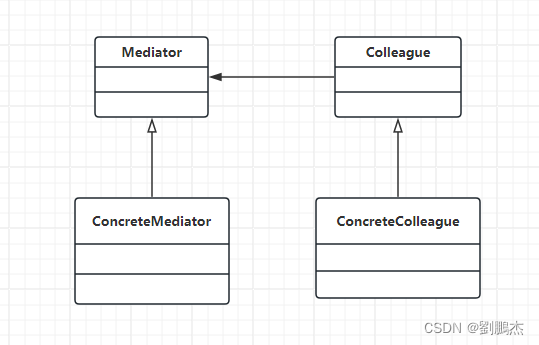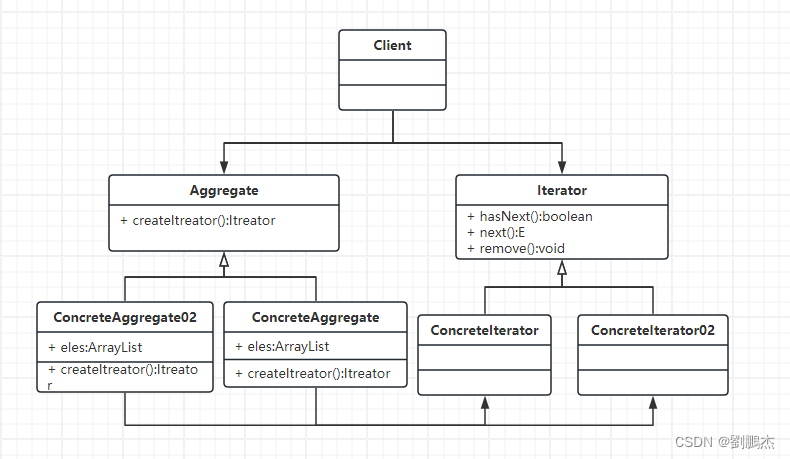本文介绍: 享元模式来咯~
设计模式-享元模式
享元模式(Flyweight Pattern)是一种结构型设计模式,主要用于减少创建大量相似对象对内存资源的消耗,通过共享这些对象来提高程序性能和系统资源利用率。在实际应用场景中string就是使用了享元模式,string a = “123”; string b = “123”;
我们假设有一个场景是需要创建大量的颜色对象,但其实大部分颜色对象的RGB值是重复的,因此可以通过享元模式来共享这些重复的颜色对象,以节省内存空间。
代码示例
/**
* 颜色接口
*/
public interface Color {
void paint(ColorContext context);
// 获取颜色的RGB值
int getRGB();
}
/**
* 具体颜色实现
*/
public class ConcreteColor implements Color{
private final int rgb;
public ConcreteColor(int rgb) {
this.rgb = rgb;
}
@Override
public void paint(ColorContext context) {
System.out.println("RGB的值是: " + rgb);
// 在实际场景中会使用rgb值来填充颜色等操作
}
@Override
public int getRGB() {
return rgb;
}
}
/**
* 颜色上下文,存储享元对象外部状态
*/
public class ColorContext {
private Point position;
public ColorContext(Point position) {
this.position = position;
}
public Point getPosition() {
return position;
}
}
/**
* 享元颜色工厂
*/
public class ColorFactory {
private Map<Integer, Color> colorMap = new HashMap<>();
public Color getColor(int rgb) {
if (!colorMap.containsKey(rgb)) {
colorMap.put(rgb, new ConcreteColor(rgb));
}
return colorMap.get(rgb);
}
}
/**
* 享元模式客户端
*/
public class FlyweightDemo {
public static void main(String[] args) {
ColorFactory factory = new ColorFactory();
Point pos1 = new Point(0, 0);
Point pos2 = new Point(10, 10);
Color red1 = factory.getColor(001);
red1.paint(new ColorContext(pos1));
// 同样的RGB值,复用同一个对象
Color red2 = factory.getColor(001);
red2.paint(new ColorContext(pos2));
if (red1 == red2){
System.out.println("对象示例相同");
}
}
}
打印结果:
Connected to the target VM, address: '127.0.0.1:49072', transport: 'socket'
RGB的值是: 1
RGB的值是: 1
对象示例相同
Disconnected from the target VM, address: '127.0.0.1:49072', transport: 'socket'
原文地址:https://blog.csdn.net/m0_62649352/article/details/135763228
本文来自互联网用户投稿,该文观点仅代表作者本人,不代表本站立场。本站仅提供信息存储空间服务,不拥有所有权,不承担相关法律责任。
如若转载,请注明出处:http://www.7code.cn/show_62387.html
如若内容造成侵权/违法违规/事实不符,请联系代码007邮箱:suwngjj01@126.com进行投诉反馈,一经查实,立即删除!
声明:本站所有文章,如无特殊说明或标注,均为本站原创发布。任何个人或组织,在未征得本站同意时,禁止复制、盗用、采集、发布本站内容到任何网站、书籍等各类媒体平台。如若本站内容侵犯了原著者的合法权益,可联系我们进行处理。




![[设计模式Java实现附plantuml源码~行为型]请求的链式处理——职责链模式](https://img-blog.csdnimg.cn/direct/699aac3ed0c446d088772a0ed4c444ed.png)


